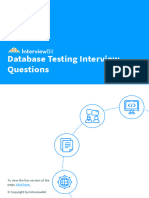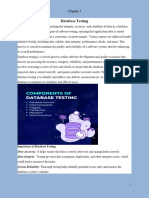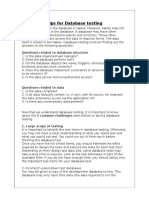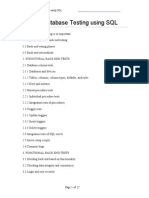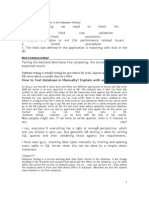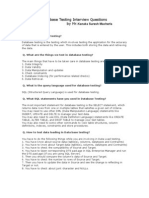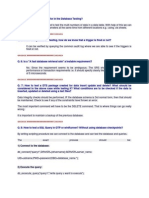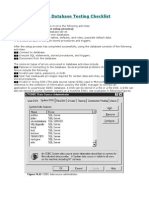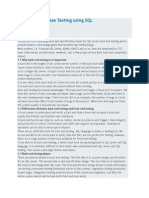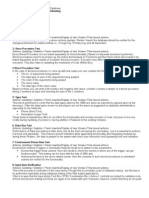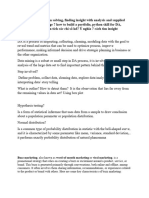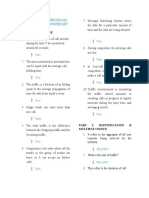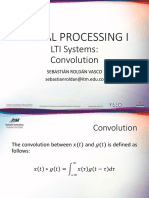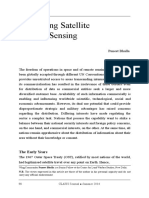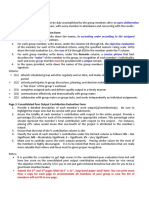0% found this document useful (0 votes)
222 views3 pagesDatabase Testing Notes
The document provides an overview of database testing, including integration testing, database schema testing, stored procedure tests, trigger tests, stress testing, and benchmark testing. It outlines the essential tasks and checks involved in each type of testing, emphasizing the importance of verifying database components and ensuring data integrity. Additionally, it includes a self-assessment section with questions related to the concepts discussed.
Uploaded by
Wilson WanjohiCopyright
© © All Rights Reserved
We take content rights seriously. If you suspect this is your content, claim it here.
Available Formats
Download as DOCX, PDF, TXT or read online on Scribd
0% found this document useful (0 votes)
222 views3 pagesDatabase Testing Notes
The document provides an overview of database testing, including integration testing, database schema testing, stored procedure tests, trigger tests, stress testing, and benchmark testing. It outlines the essential tasks and checks involved in each type of testing, emphasizing the importance of verifying database components and ensuring data integrity. Additionally, it includes a self-assessment section with questions related to the concepts discussed.
Uploaded by
Wilson WanjohiCopyright
© © All Rights Reserved
We take content rights seriously. If you suspect this is your content, claim it here.
Available Formats
Download as DOCX, PDF, TXT or read online on Scribd
/ 3









